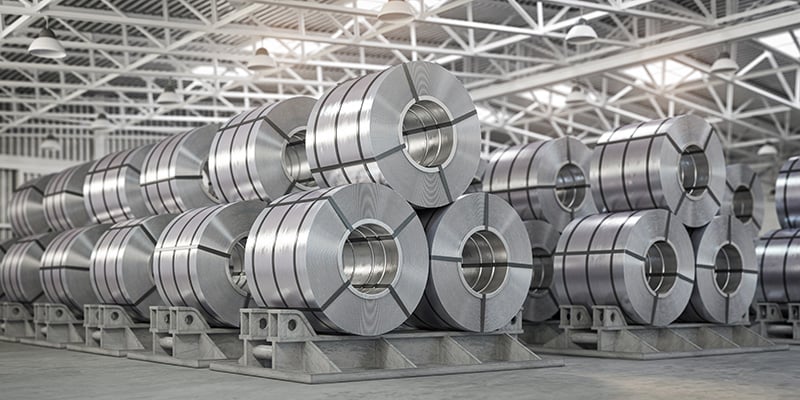Quality in Every Mold: Plastic Container Manufacturer Knowledge
Wiki Article
Effective Industrial Recycling Solutions for Lasting Product Packaging: A Comprehensive Overview
That's where this extensive overview on efficient industrial recycling solutions for lasting packaging comes in. By exploring vital areas such as packaging product selection, making for recyclability, applying reusing framework, working together with recycling companions, and tracking and measuring reusing success, this guide will certainly furnish you with the knowledge and tools required to make enlightened decisions and drive favorable change within your company. Whether you're a packaging expert, sustainability manager, or merely interested in the topic, this overview will give valuable insights and methods to assist you navigate the world of lasting packaging.Packaging Material Choice
The option of packaging products plays a crucial role in making sure the sustainability of commercial recycling remedies. The selection of materials is key in decreasing environmental impact and optimizing reusing performance when it comes to lasting product packaging. Choosing the ideal products can help minimize waste generation, save resources, and promote a round economic situation.Products like cardboard, paper, glass, and certain kinds of plastics can be recycled several times without shedding their high quality. On the various other hand, materials that are hard to recycle, such as blended plastics or non-recyclable composites, can produce challenges for the recycling process and may end up in burners or garbage dumps.
An additional consideration is making use of naturally degradable and renewable materials. Packaging made from renewable resources, such as plant-based plastics or biopolymers, can aid reduce dependence on nonrenewable fuel sources and minimize climate modification. In addition, eco-friendly materials damage down normally over time, minimizing the build-up of waste in landfills.
In addition, the weight and volume of packaging materials must be decreased to decrease transportation expenses and power intake. Light-weight materials not just call for less sources throughout manufacturing yet also add to lower carbon emissions during transportation.
Creating for Recyclability
In order to ensure the recyclability of packaging materials, thoughtful style is essential. Designing for recyclability entails creating packaging that can be easily sorted, separated, and processed in reusing centers. One vital facet of designing for recyclability is the choice of materials. Packaging designers ought to prioritize using materials that are commonly accepted for recycling and have developed reusing frameworks. Products such as glass, light weight aluminum, and particular kinds of plastic, like PET and HDPE, are frequently reused and ought to be chosen over materials that are hard or expensive to recycle.One more important consideration in making for recyclability is the elimination of unneeded components or products. By reducing the variety of layers, finishes, and extra parts, packaging can be made simpler and much easier to recycle. In addition, designers need to aim to lower making use of combined materials, as they can make complex the recycling procedure.

Implementing Recycling Facilities
Efficient implementation of reusing infrastructure is crucial for the success of industrial recycling options. Without proper facilities in location, the reusing process ends up being ineffective and ineffective, hindering the general objective of lasting packaging.To carry out reusing framework effectively, a number of vital factors need to be taken into consideration. Firstly, there ought to be a well-organized collection system that promotes the splitting up and collection of recyclable materials. This can consist of designated recycling bins in public areas, in addition to collaborations with waste monitoring firms for curbside pick-up and sorting.
Once collected, the recyclable materials need to be delivered to reusing centers in a prompt manner. This requires efficient logistics and transportation networks, guaranteeing that the materials reach the suitable facilities without delay.
At the recycling facilities, advanced sorting and processing technologies ought to be in place to separate various kinds of products successfully. This consists of using automated sorting devices, optical scanners, and hands-on sorting techniques.
check it out In addition, there ought to be a robust market demand for recycled materials. This can be attained through collaborations with makers and sectors that utilize recycled products in their manufacturing processes. Creating a stable market for recycled products incentivizes the reusing industry and advertises the round economic climate.
Working Together With Recycling Partners

One trick element of collaborating with reusing companions is the establishment of clear communication networks. It is essential to develop open lines of interaction to help with the exchange of information, updates, and responses. This enables both parties to remain notified about the progression of recycling campaigns and attend to any type of difficulties or issues that might arise.
In addition, collaboration can entail joint efforts in designing and carrying out reusing programs. Reusing partners can give useful insights and assistance in developing reliable collection systems and identifying the most proper recycling modern technologies. By functioning together, services and recycling partners can maximize the reusing process and lessen waste.
Moreover, partnership can expand past the operational elements of reusing. It can likewise include campaigning for and education efforts. By signing up with pressures, businesses and recycling companions can elevate recognition about the value of reusing and advertise the adoption of sustainable packaging check my blog methods amongst customers and various other stakeholders.
Monitoring and Measuring Recycling Success
To ensure the efficiency of commercial reusing options and the success of lasting product packaging goals, it is important for services and their reusing companions to develop a thorough system for monitoring and measuring reusing success (bulk container recycling). Tracking and gauging reusing success permits organizations to assess the impact of their reusing initiatives, recognize locations for enhancement, and established significant targets for future developmentOne pop over here way to track recycling success is through using information collection and evaluation devices. By gathering information on the amount of product packaging waste created, the percentage of waste that is reused, and the sorts of materials being reused, services can gain beneficial insights into their reusing performance. This information can then be analyzed to identify trends, patterns, and areas of inefficiency.
An additional crucial element of tracking and gauging reusing success is establishing clear and standardized metrics. This enables companies to contrast their efficiency versus market standards and track their development gradually. Metrics such as reusing prices, waste diversion prices, and greenhouse gas discharges can offer a measurable action of a service's recycling success.

Final Thought
To conclude, implementing reliable industrial recycling solutions for lasting packaging calls for careful factor to consider of packaging product choice, designing for recyclability, applying recycling framework, working together with recycling companions, and tracking and determining recycling success. By including these practices, services can add to a more environmentally-friendly and sustainable technique to packaging, minimizing waste and promoting the round economic climate.By discovering essential areas such as packaging material option, making for recyclability, carrying out reusing infrastructure, teaming up with recycling partners, and monitoring and measuring recycling success, this overview will certainly equip you with the understanding and devices necessary to make educated choices and drive positive change within your organization. Product packaging designers need to prioritize the use of products that are extensively approved for recycling and have established reusing frameworks.Collaboration with recycling partners is crucial for the successful implementation of industrial reusing remedies and the achievement of sustainable packaging goals. By joining pressures, organizations and reusing companions can raise awareness about the value of reusing and advertise the fostering of lasting product packaging techniques amongst customers and various other stakeholders.
By accumulating information on the quantity of product packaging waste created, the percent of waste that is reused, and the kinds of products being recycled, companies can get useful understandings into their recycling performance.
Report this wiki page